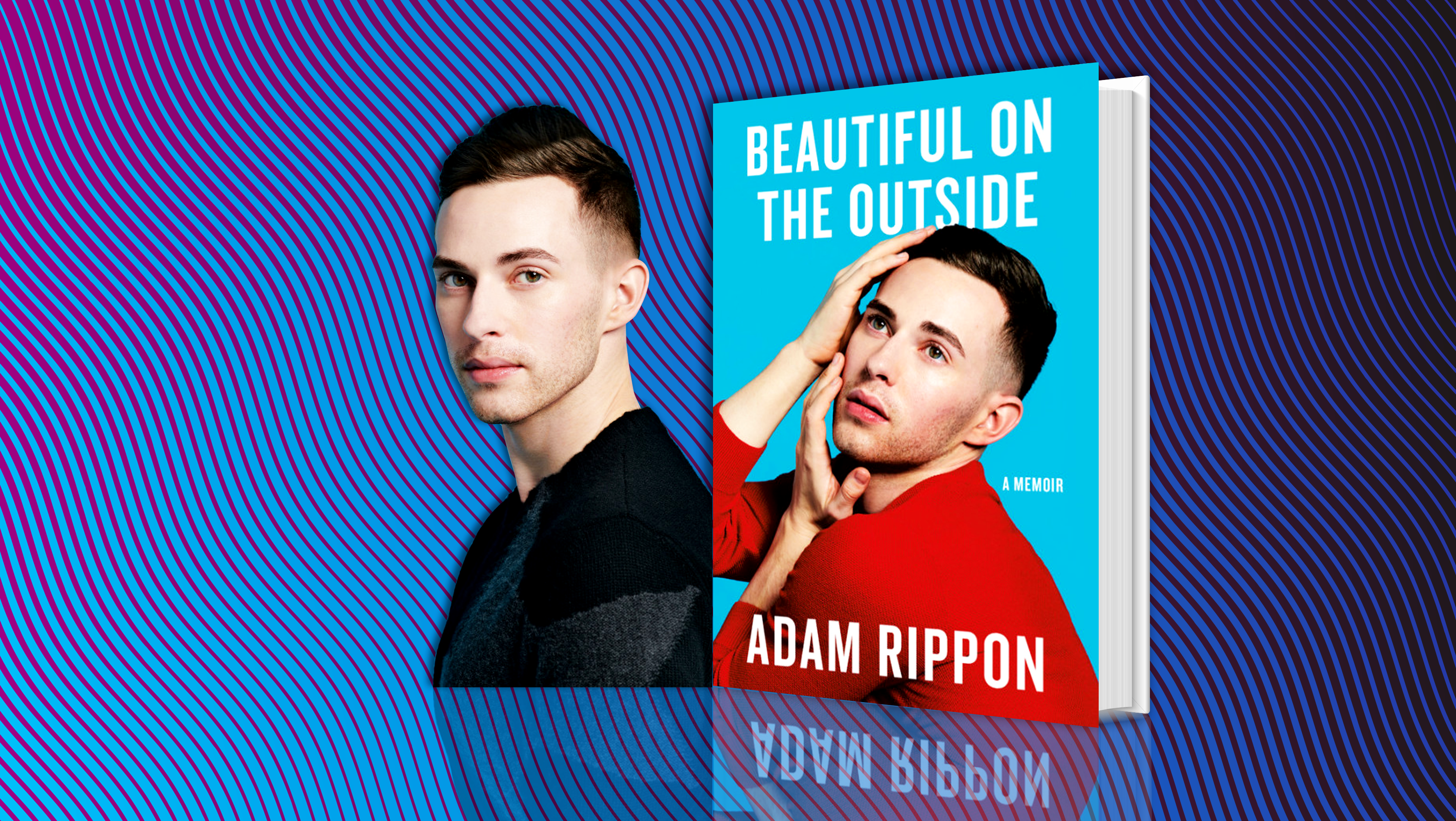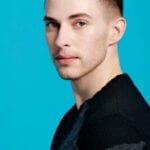In his memoir, Beautiful on the Outside, Adam Rippon recounts skating at a young age, his relationship with his mother and his rise to celebrity. Rippon shares all of these memories in his book, out on Oct 15. This exclusive excerpt explores Rippon’s first shot at figure skating and belonging.
In grammar school, it was a school rule that if someone in the class was going to have a birthday party, then everyone had to be invited.
In fourth grade, just before I turned 10, one of the girls in my class, Anastasia Davenport (if that’s not her drag name, then maybe it should be mine), decided she was going to have her birthday party at the Ice Box. It was a brand-new skating rink that had just opened in nearby Pittston, Pennsylvania, a town just as glamorous as its name implies.
At first, I wasn’t excited about it because of my past bad skating experiences at ski resorts. But when we arrived at the rink, it was totally different. It was inside, so even though it wasn’t warm, at least it wasn’t freezing cold and windy.
The real reason I was willing to give skating another chance was because, a year earlier, I had watched figure skating for the first time on TV, during the 1998 Olympic Games. (My mom says we watched the 1994 Olympics together, but I was four and must have been in a blackout because I don’t remember a thing.) My mom had invited her friend Andrea to come over and watch the games. I had never met Andrea before, but I heard a lot about her. If this stranger was coming over just to watch something on TV, it meant the event had to be something special. I can’t help but get excited about an occasion.
I got even more excited about the Olympics when, on the afternoon of the big day, we were in the drive-thru at McDonald’s and the announcer on the car radio said he had the results of the women’s individual figure skating competition and if you didn’t want to spoil that night’s prime-time coverage of it, then you should turn off your radio now. My mom heeded that prehistoric spoiler alert and I thought to myself, “Wow, it is going to be so dramatic when we finally find out who wins!”
Once Andrea arrived, I thought we were all going to watch the competition together and, when it was over, have our own medal ceremony. This was just a few months after the holidays, so I found some Christmas ribbon and cut circles out of paper to make gold, silver, and bronze medals. I loved watching Michelle Kwan battle Tara Lipinski, especially because it was being billed as this supreme artist against an up-and-comer, but I fell asleep halfway through and my mom had to tell me who won in the morning. I was happy for Tara, but mostly I was upset that I didn’t get to perform the mock medal ceremony with my homemade medals in my living room.
Because of all this, I was willing to give skating another chance as long as it wasn’t at a ski resort. When I got to the rink, I was skating around with the kids in my class. I wanted the ice to be really worn out, full of the cracks and divots that professional skaters hate. Twice during the public skate, they cleared the rink so the Zamboni could cut fresh ice, and I didn’t like that. When the ice was smooth, it was fast and furious, and I was already too much of both. Once the ice got sufficiently bombed out, I learned that I could go slow enough to move around and start to have some fun.
There were some local girls who I had never seen before skating at that rink, and they knew a few simple jumps and how to do spins on one foot. During a normal public skate, the figure skaters have to skate in the middle because the rest of us laypeople have the perimeter of the rink to be messy train wrecks and fall all over the place. I remember watching these girls in the center and being completely enamoured. I thought they were the coolest thing ever, and though the kids who were cool at school never wanted to hang out with me, I thought maybe these girls might.
These master skaters didn’t know who I was. It was a fresh start. They had never seen me cry in the mudroom or try to impress the teacher with a hoagie delivery. It was like in a movie when someone moves to a foreign country and changes their name. Better yet, it was like a classic rom-com where the heroine takes off her glasses and gets her braces removed (either from her legs or her teeth, but maybe both) and the audience realizes there was a beauty hiding underneath the whole time. This was my version of that.
I was feeling kind of brave, so I skated into the middle—or more likely crawled or slowly glided, because I was really bad at stopping. I went up to a girl who was doing the single-foot spin and asked her how to do that. “I don’t think you can, but I can teach you how to do a two-foot spin,” she said.
In that moment I was sold. It was the first time someone my age offered to teach me something, and they were excited about it. Several of the girls took me on as their project for the day. I remember them telling me I had to go over to one of the dots painted under the ice that hockey players use (I still have no idea what they mean), and I should practice spinning in that dot. They were all helping me do a two-foot spin in the middle of the ice. Who knew where the rest of my class was? Who cared? I was where the action really was.
Two of those girls were Kitty and Jocelynn, who was already honing their skills with figure skating lessons. They would later become my friends when I started skating all the time. I just thought they were totally amazing, and them teaching me how to skate felt like Mariah Carey and Whitney Houston taking a break from dueting on “When You Believe” to give a young singer a voice lesson. When the informal lesson was over and we had to clear the ice, one of the girls said, “You should come back; it would be really fun.” I knew, at that moment, that I would certainly be back, if not only for the skating but for something I’d never felt before that day—the warm Swiss Miss–hot-chocolate glow of acceptance.
Excerpted from Beautiful on the Outside: A Memoir by Adam Rippon. Copyright © 2019 by Adam Rippon. Reprinted with permission of Grand Central Publishing.


 Why you can trust Xtra
Why you can trust Xtra


